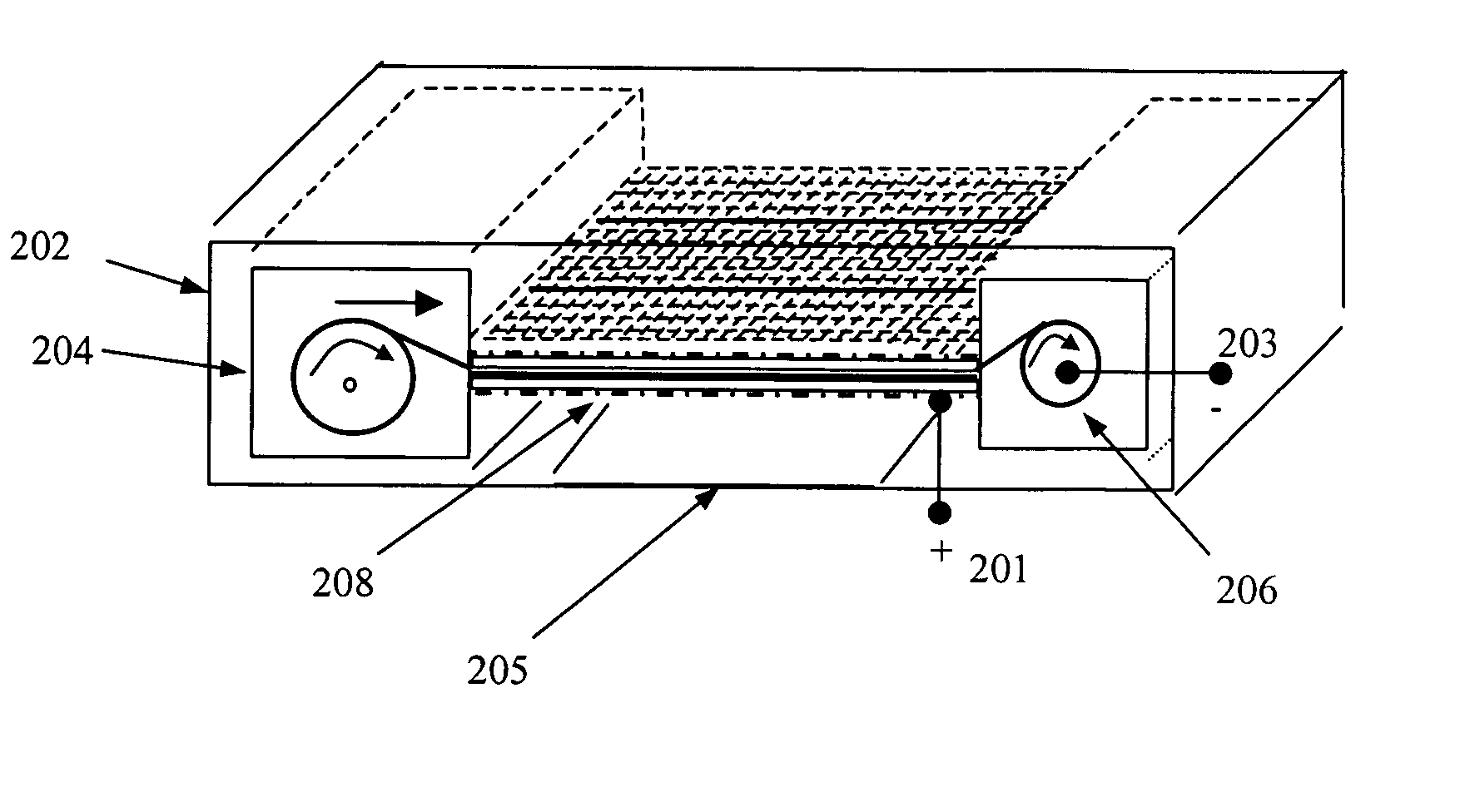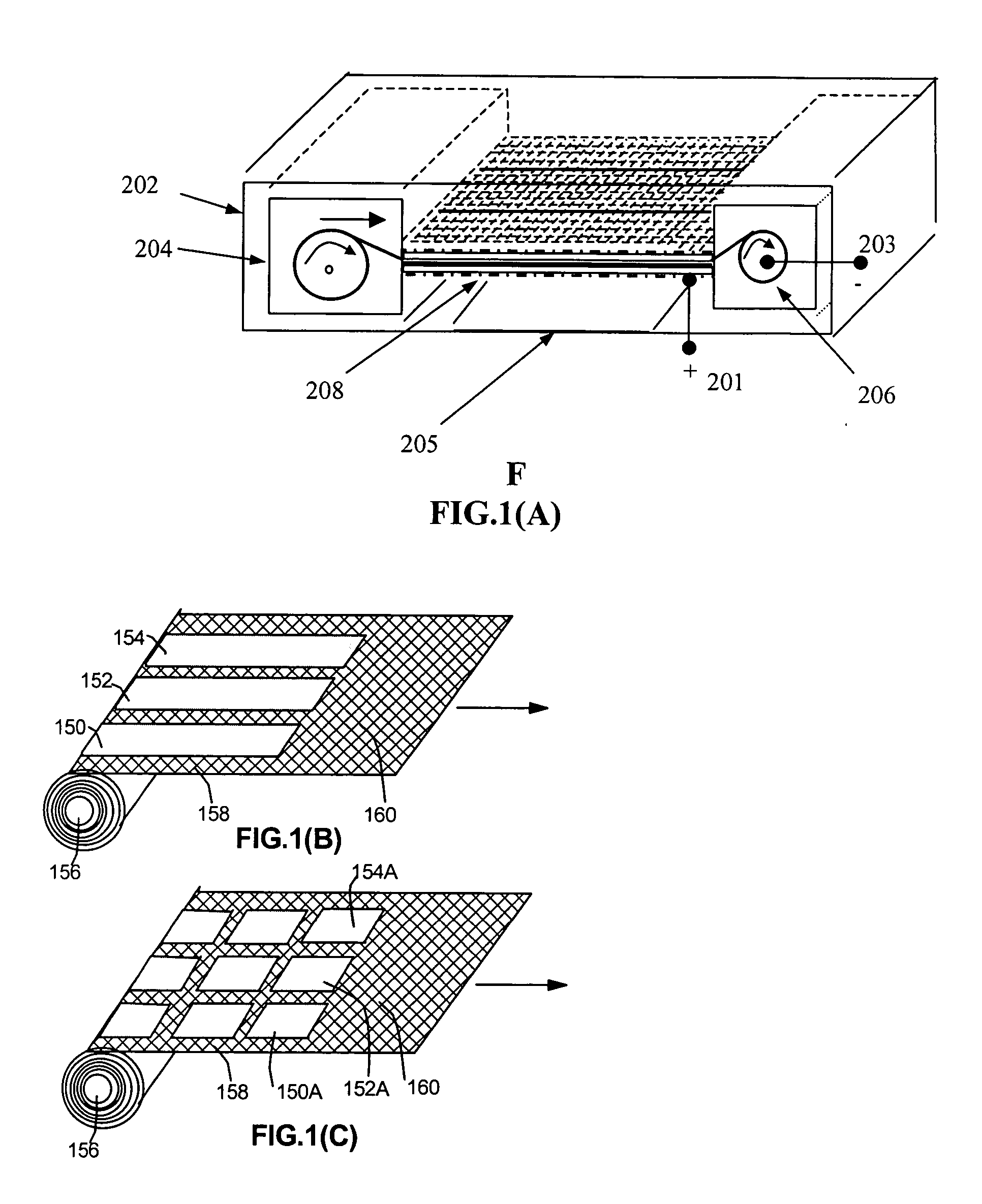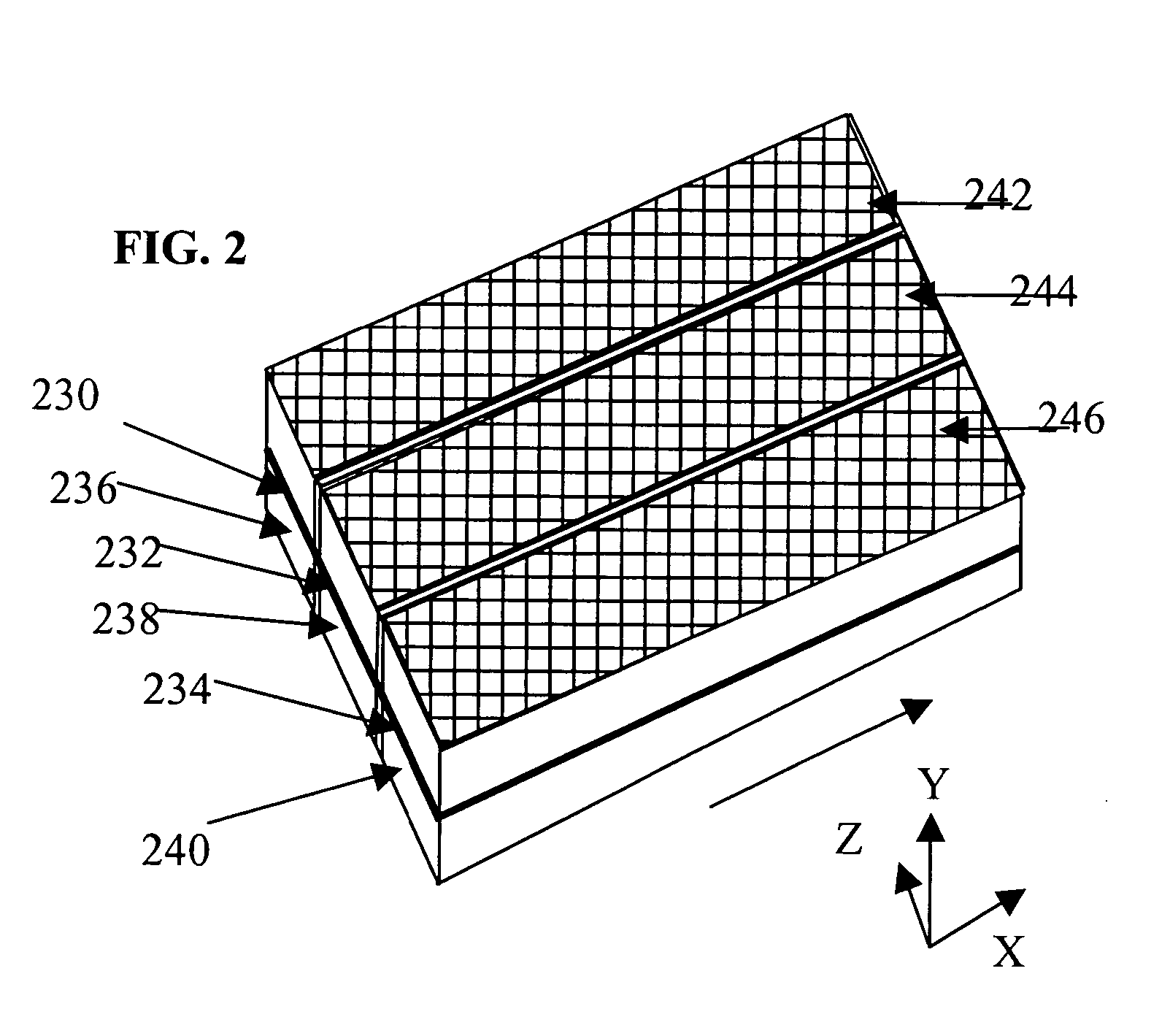Actively controlled metal-air battery and method for operating same
a battery and metal-air technology, applied in the field of electrochemical cells, can solve the problems of exceptionally long operating life and essentially infinite shell life of batteries, and achieve the effects of high load, high power density, and high energy capacity
- Summary
- Abstract
- Description
- Claims
- Application Information
AI Technical Summary
Benefits of technology
Problems solved by technology
Method used
Image
Examples
case 1
[0060] Continuous Use of a Battery: To begin the battery operation, the air vent D1 may be manually switched open. The electrolyte valve to the cell assembly may also be switched open, e.g., in its simplest case, by removing a separator between a fluid reservoir and the electrolyte chamber. These two steps will allow electrolyte to flow into the electrolyte chamber and allow outside air to enter the air cathode inside the battery casing to initiate the battery operation.
[0061] Once activated, the first segments of anode material will produce some electricity. However, with a high power demand level, its output voltage may be less than UL, a lower limit predetermined by a battery designer or manufacturer. (Alternatively, a current or power level, or a combination of voltage, current, and power values mat be used as a criterion.) In this situation, the sampling unit in FIG. 3 will sense the voltage, send control-driving signals to the power control unit through connection 2, and make...
case 2
[0064] Intermittent Use: The initial startup procedure of a battery for the intermittent use is similar to that for the continuous usage case. If the battery is not going to be used for a while (after a previous usage period), the air vent should preferably be closed to prevent atmospheric air from entering the cell in order to prolong the service life of the battery. The sampling unit, as shown in FIG. 3, can respond to the power demand change by sensing the voltage fluctuation when an external circuit does not drain any further current from the battery. This would result in a battery output voltage being over UH, a predetermined upper limit defined by battery designers. After the sampling unit detects this voltage fluctuation, it sends a control signal to the power control unit, which is instructed to power the logic control unit and all drivers. The powered logic control unit again reads the SH signal received from the sampling unit through connection 1 to make sure the voltage ...
PUM
 Login to View More
Login to View More Abstract
Description
Claims
Application Information
 Login to View More
Login to View More - R&D
- Intellectual Property
- Life Sciences
- Materials
- Tech Scout
- Unparalleled Data Quality
- Higher Quality Content
- 60% Fewer Hallucinations
Browse by: Latest US Patents, China's latest patents, Technical Efficacy Thesaurus, Application Domain, Technology Topic, Popular Technical Reports.
© 2025 PatSnap. All rights reserved.Legal|Privacy policy|Modern Slavery Act Transparency Statement|Sitemap|About US| Contact US: help@patsnap.com



